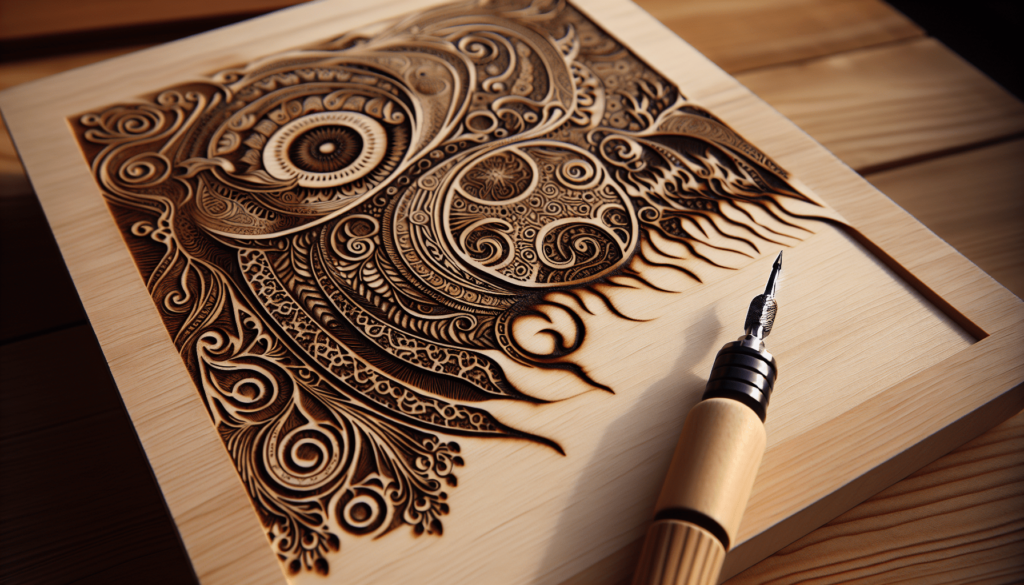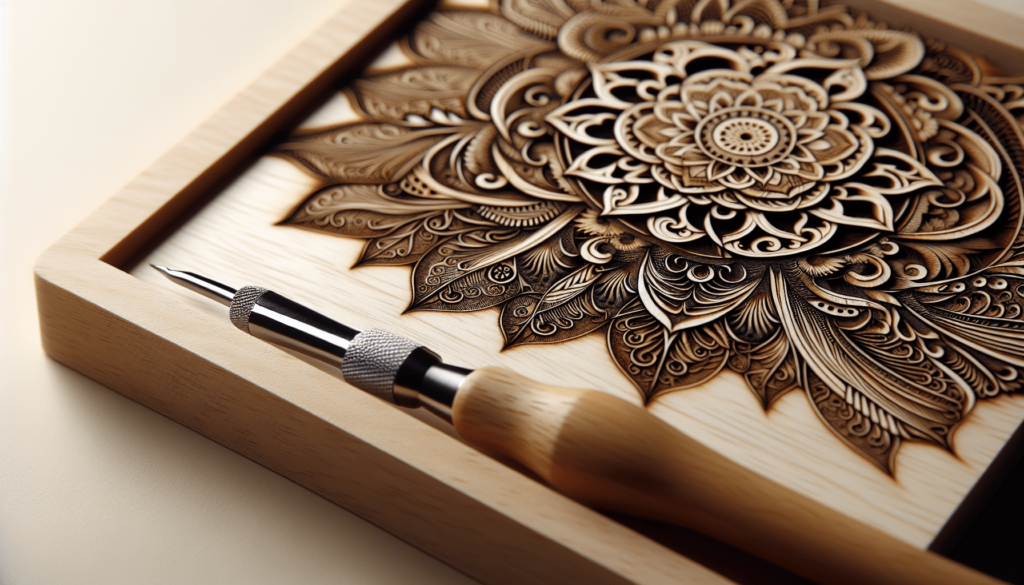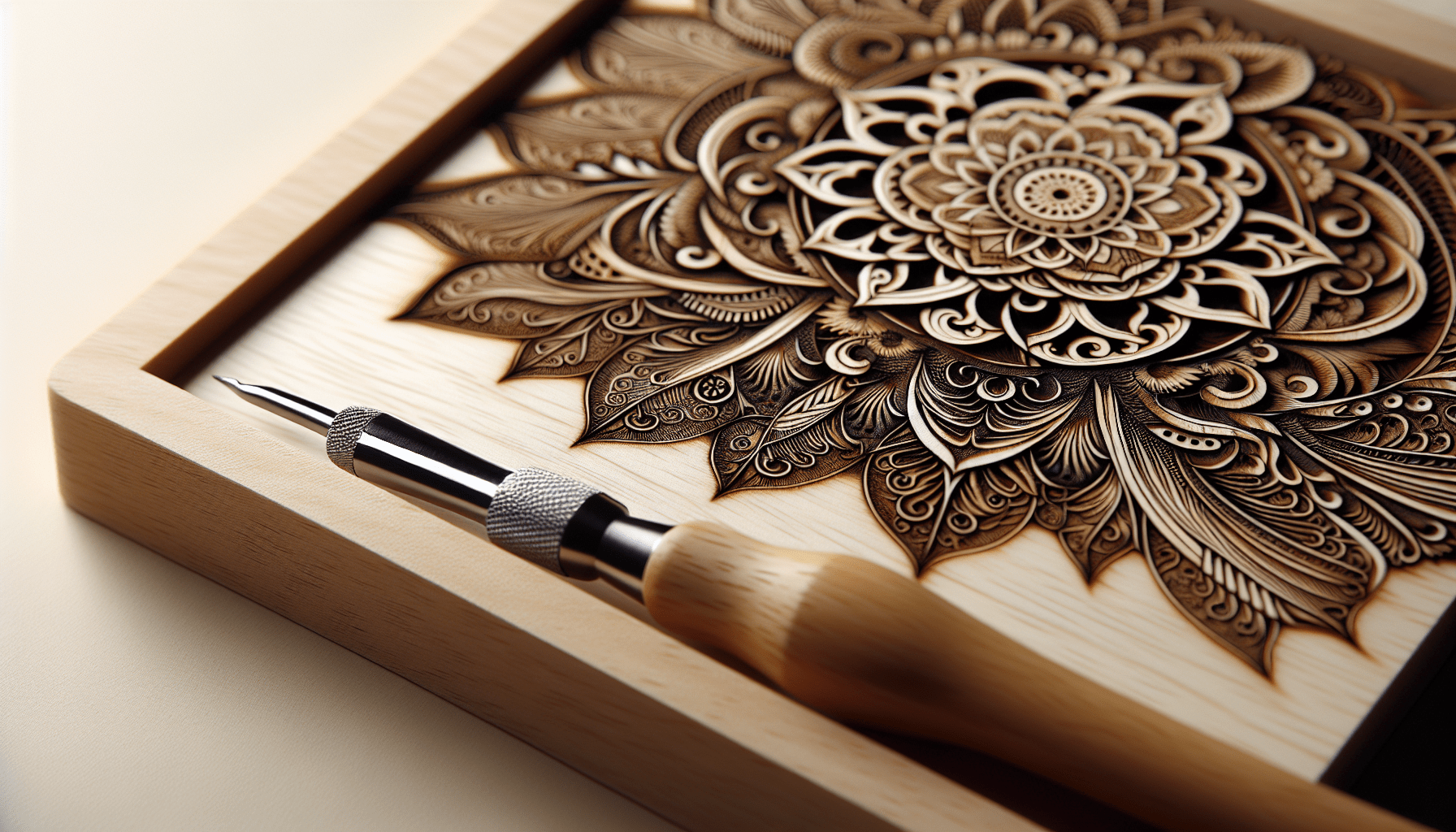Pyrography, the art of decorating wood, leather, or other materials with burn marks, is a fascinating and rewarding hobby I’ve recently delved into. Through my exploration, I’ve come to realize that finding the perfect term to describe pyrography can be quite a challenge. It’s not just about the act of burning designs into a surface—it’s about the creativity, skill, and passion that fuel each piece. As I experimented and learned more about this art form, I discovered that the best word to encapsulate the essence of pyrography is “woodburning.” This term captures the core of the craft and conveys the foundational element—wood—that many artists, including myself, often use as their canvas. Have you ever found yourself pondering, what’s the best word for pyrography? I mean, we often stumble upon terms that sound fancy, exotic even, and pyrography is one of those contenders. The kind of word you might drop casually at a dinner party just to see who, if anyone, knows what you’re talking about. But let’s dig deeper. Spoiler: we’re not just talking about some abstract concept here. Pyrography is genuinely fascinating, and figuring out the best word to encapsulate its essence is like embarking on a little linguistic adventure. Let’s dive in, shall we?
What Exactly is Pyrography?
Before we gallivant through a thesaurus, we need to unpack what pyrography actually entails. Pyrography, also whimsically known as “wood burning,” involves decorating wood (or sometimes other materials) by burning a design onto the surface with a heated tool. Simple, right?
Origin and Etymology
The word “pyrography” itself is a bit of a linguistic chimera, originating from the Greek words “pyr,” meaning fire, and “graphos,” meaning writing. So it literally translates to “writing with fire.” How poetic is that?
A Brief History
Pyrography is not a modern craft; it has deep roots going back to ancient civilizations. Various cultures have embraced this art form, each adding its unique flair. From the ancient Egyptians to the indigenous people of Australia, humans have a long-standing affinity for burning patterns into wood.
Why “Pyrography” Works
Now, you might be wondering, why not just stick with “pyrography”? After all, it’s descriptive and sounds pretty cool. Well, let me tell you why it works so well.
Accuracy in Description
“Pyrography” is spot on. It tells you precisely what you need to know—fire and writing. There’s no ambiguity here. You’re not left wondering if it involves watercolors or marble.
Unique and Exotic
There’s something intriguing about the word itself. It stands out in a world saturated with mundane terms. When you say it, people are likely to perk up and think, “What on earth is that?”
A Little Fancy
Let’s face it, saying “wood burning” just doesn’t have the same ring to it. Pyrography gives you that air of sophistication, almost like you’re discussing an arcane, lost art form.

Exploring Alternatives
But for the sake of curiosity and perhaps a little fun, let’s explore some other words that could potentially capture the essence of pyrography.
Word Contenders
| Word | Meaning | Pros | Cons |
|---|---|---|---|
| Pyrographia | A more Latin-inspired twist on pyrography | Sounds academic and official | Too similar to pyrography |
| Fire-etching | Direct translation of the process | Easy to understand | Lacks the exotic flair |
| Burn Art | Artistic depiction of the method | Simple and straightforward | Sounds a bit harsh |
| Flame Sketching | Evokes a strong visual image | Very descriptive | Could be confused with actual flames |
| Charred Impressions | Focuses on the result of the process | Poetic and evocative | Might be too vague |
The Case for “Pyrographia”
“Pyrographia” offers a more academic and perhaps slightly ancient twist on “pyrography.” It conjures images of leather-bound manuscripts and musty libraries.
Embracing “Fire-Etching”
“Fire-etching” tells you exactly what’s happening. You’re etching with fire. It’s straightforward and accessible, but maybe a bit too practical when we’re aiming for flair.
Considering “Burn Art”
“Burn Art” is simple and to the point. It’s art created by burning. However, it doesn’t quite capture the delicate, almost dainty process involved. Plus, “burn” might evoke images of destruction, and that’s not exactly what we’re going for.
Visualizing “Flame Sketching”
“Flame Sketching” immediately brings to mind an image of drawing with flames, which is pretty accurate. However, it might mislead someone to think you’re dealing with actual flames rather than a heated tool.
Pondering “Charred Impressions”
“Charred Impressions” gives a poetic twist to the whole process. It’s evocative and sounds intriguing, but it might be a bit too vague. When someone hears it, they might not immediately think of pyrography.
Drilling Down to Definitions
You see, the fun part about language and words is how they can shape our perception of something. Here are some more nuanced definitions to consider.
Burning Art
This is probably the most straightforward approach. You’re making art by burning, plain and simple. But does it carry the same depth and mystery?
Fire Writing
“Fire writing” could be considered, especially if you want to keep the Greek roots while making it even more descriptive. But it sounds a little too much like your letters are on fire, doesn’t it?
Scorched Illustrations
Here’s another option that’s a bit more metaphorical. “Scorched Illustrations” brings the mind to the effect of the process. It’s artistic, yes, but does it hold the weight of the traditional term?

The Artistic Connection
The best word for pyrography should also elicit some connection to the artistic endeavor it represents. Pyrography, at its core, is a form of artistic expression.
Creativity Unleashed
Whether you’re a novice or a seasoned artist, pyrography is a medium that requires precision, patience, and a spark (no pun intended) of creativity. The heated tool becomes an extension of the artist’s hand, capable of everything from the lightest touches to bold, intricate designs.
Tools of the Trade
Traditionally, the tools used for pyrography include a pyrography pen or a soldering iron. The more sophisticated tools have temperature control, which is crucial because different types of wood respond differently to heat. So, the terminology should respect this controlled, almost clinical method.
Cultural Imprints
And let’s not forget the cultural imprints that terms can carry. As mentioned before, many ancient cultures engaged in pyrography. Think about the kind of terminology they might have used.
Indigenous Influence
Indigenous Australians have used heated sticks for wood burning for centuries, crafting tools and ceremonial items with painstaking detail. They might not have called it pyrography, but the essence was the same: fire inscribing stories onto wood.
Ancient Egypt
Ancient Egyptians used wood-burning techniques to decorate their artifacts. The language of that time might offer inspirational terms like “sacred fire” or “hieroglyphs of flame.” Imagine the gravitas such words could carry.
Pyrography’s Modern Renaissance
Modern times have seen a resurgence in the popularity of pyrography, possibly driven by the desire to connect with more tactile, hands-on crafts in our increasingly digital lives.
DIY Culture
The rise of DIY culture and platforms like Etsy has made pyrography more accessible. Now, you’ll find people burning designs onto everything from cutting boards to leather jackets, which leads us to the question of whether a new, trendy term like “FireCraft” might catch on.
Social Media Influence
In a world where #Pyrography might be trending on Instagram, the word itself needs to be snappy, engaging, and—dare I say—Insta-worthy. “Wood Burning” feels a bit too basic for the digital age, where every term is ripe for a hashtag.
Words, Words, Words
Ah, words. They’re beautiful, they’re intricate, and they’re often just plain confusing. So let’s break down a few more academical suggestions, for the sheer joy of overcomplicating things.
Thermographia
Borrowing again from Greek, “thermo” means heat. “Thermographia” sounds like it was plucked from a physics textbook, but hey, it’s pretty precise!
Caustic Art
This one sounds a bit toxic—literally. “Caustic” relates to burning, but it’s also used in chemistry to describe substances that can destroy living tissue. Maybe not the best choice, unless you’re aiming for a term with a touch of danger.
Igneous Design
“Igneous” relates to fire too. It’s more geological but could serve a dual purpose if you’re into rocks and burning. Multi-functional, but perhaps a bit too ambiguous.
Navigating Niche Terms
Of course, there’s also a case to be made for sticking to niche, specialized terms. If you’re an aficionado, you might prefer the word “pyrography” precisely because it’s not mainstream.
Artistic Authenticity
Certain terms lend an air of authenticity. Think about other artisanal crafts like “calligraphy” or “ceramics.” They’re not everyday words, but they carry a sense of tradition and respect for the craft.
Craftsmanship and Legacy
When you stick to “pyrography,” you’re not just describing a technique; you’re honoring a lineage of artisans who have perfected this skill over generations. It’s not merely modern but a continuation of an age-old practice.
The Final Verdict
So, after all this linguistic exploration, what is the best word for pyrography? My vote still goes to the classic term—pyrography. It just fits in so many ways:
- Descriptive: Tells you exactly what’s happening.
- Unique: Not a word you hear every day, which makes it special.
- Historical: Carries a sense of tradition and artistry.
- Sophisticated: Has that certain je ne sais quoi, making you sound just a tad bit sophisticated.
Of course, language is fluid, and the “best” word can often come down to personal preference. But for the blend of history, accuracy, and just the right touch of pizzazz, “pyrography” fills the bill.
By the way, if you ever decide to drop “pyrography” at your next dinner party, and someone asks what it means, not only will you have the perfect definition, but you can regale them with a detailed exploration of why it’s the best word for the craft. How’s that for impressive?
Alright, time to put away the mental thesaurus and perhaps get back to some actual pyrography. Or, you know, maybe just a nice, relaxing cup of tea. Until next time!

